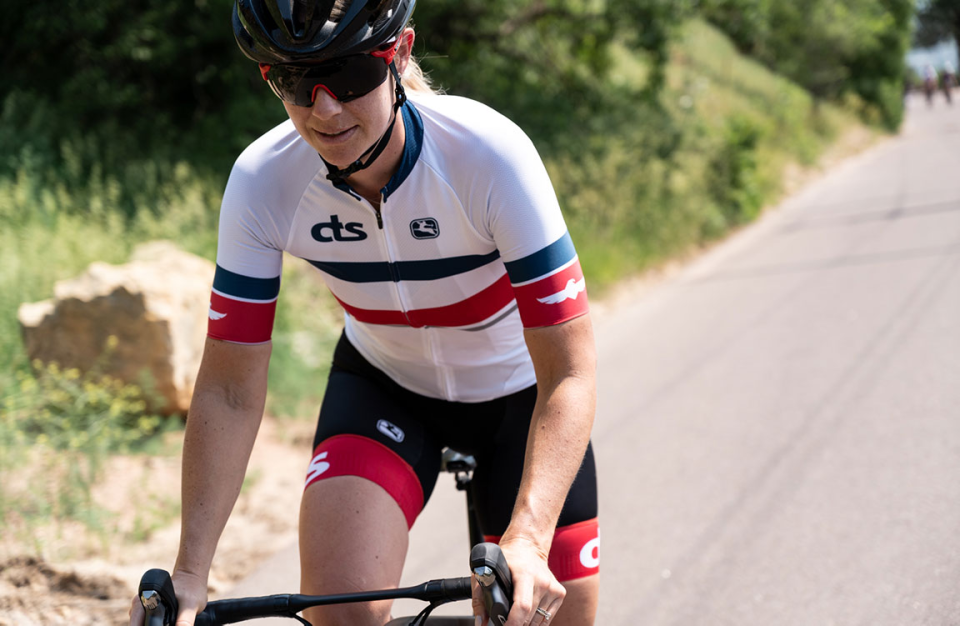Three Training Rides Cyclists Need Every Week
Athletes and coaches often mistake complexity for sophistication, leading to the belief that a complex training plan or intricate workouts must certainly be more effective says Chris Carmichael, Founder and Head Coach of CTS
There is absolutely a time and place for complicated periodization models and advanced interval setups, but it’s important to realize those things are only necessary once you have maxed out the gains you can achieve through the simple stuff. And the good news is, the vast majority of high-performance fitness comes from consistently doing the simple stuff over a long period of time.
Simple doesn’t mean easy. To achieve high performance you have to work hard, you just don’t have to make the workouts difficult to understand or execute. If your goals are to ride faster, increase your aerobic endurance, be more comfortable in the group ride, or to start competing, there are three types of rides you need to complete each week: Aerobic Endurance, Intervals, and Recovery.

Aerobic Endurance
These moderate-intensity rides form the foundation the rest of your fitness is built upon. At CTS we refer to them as FoundationMiles, and they are also referred to as Zone 2 or base-building rides. The intensity should be 55-75% of lactate threshold power, 69 to 83 of lactate threshold heart rate, or a rating of perceived exertion (RPE) of about 5 on a 1-10 scale, with 10 being an all-out effort. A slightly more challenging version of this is EnduranceMiles (63-87% of LT power, 69-94% of LT heart rate, and perceived exertion of 5-6). The difference between them is essentially that EnduranceMiles is meant to be your normal “go for a ride” intensity that allows for greater variability. With FoundationMiles, the point is to really focus on staying at a steady aerobic pace even with hills, etc. Depending on your level of fitness, aerobic endurance rides should be 1-3 hours, and for advanced riders they can extend to several hours.
Consistency and pacing are the keys to making aerobic endurance rides effective. Because the intensity for these rides is relatively low, more time-at-intensity is required to stimulate positive adaptations or maintain your current level of performance. You can achieve this through longer individual rides, but frequency plays a role here, too. You could ride 8 hours a week by spreading the time over 4 rides or doing two long endurance rides on the weekends. Fitness decays if there’s too much time between training stimuli, and no riding for five days between your weekend blocks is generally too long for subsequent weekend blocks to keep your fitness moving forward. Staving off that decay is also why you don’t want to miss or skip too many rides. It doesn’t take much intensity to maintain the fitness you already have, so riding easy or even a shorter ride than you planned is better than missing a ride entirely.
One of the biggest mistakes cyclists make is going too hard during aerobic endurance rides. We reserve the more challenging aerobic intensities for long intervals like Tempo and Sweet Spot Tempo workouts, and use shorter intervals to concentrate workload at intensities at and above lactate threshold. Your aerobic endurance rides should be just that: aerobic. endurance. It’s tempting to push the pace because the intensity feels easy and if you’re time-crunched you feel pressure to get as much work done as possible in your limited training time, but separation of intensity is important. To have more effective interval days, respect the moderate intensity of endurance days.
Intervals
This is a very broad category of workouts, in that intervals can range from 30 seconds to 60 minutes or more and incorporate intensities from moderately challenging to cross-eyed difficult. The type, duration, and intensity of intervals you would include in a given week will depend on your current fitness level, training goals, and phase of training. The point is, though, intervals – or repeated periods of time focused on a particular intensity level or technique, separated by periods of rest – are a fundamental necessity for improving endurance performance. At a certain point, your speed, power, and endurance will stop improving from just unstructured cycling.
Read more: The Guide to Effective Cycling Interval Training, How to Choose the Optimal Recovery Time Between Intervals.
A mistake many cyclists make is to say, “Well, I’m not training for a specific event, so I don’t need structured training.” There are certainly times when a break from structured training is good for you, but interval workouts shouldn’t only be associated with event-specific training. Intervals are the only way for a moderately-trained cyclist to generate enough workload within their available training hours to continue achieving positive adaptations and get faster/stronger.
To find out more, please visit: https://trainright.com/cycling-training-plan-by-week/
FREE 14 DAY MEMBERSHIP TRIAL
Gran Fondo Guide fans, click on the image above and get TrainRight Membership for a 14 day no obligation trial. TrainRight Membership comes with a 30-day money-back guarantee!
Recovery
The third ride you need every week is at least one recovery ride. Why a recovery ride instead of passive recovery off the bike? Well, a day completely off the bike is certainly not a bad thing (and may be necessary from a scheduling standpoint), but turning the pedals over daily helps many athletes maintain a consistent routine. Cycling has a reserved place in their daily lives, whether that means a strenuous workout or a recovery spin with through the park or with the kids. The studies on passive vs. active recovery don’t conclusively find either active or passive recovery to be superior, so I’m not going to fault anyone for opting to lay on the couch.
The other reason a designated recovery ride should be part of your week is because too many athletes refuse to take enough rest. If your cycling schedule is ambiguous or just alternates between interval and endurance days, it’s easy to just get on the bike and ride too hard. Label specific days as recovery rides – or complete rest days – so you can stick with your own plan.
Putting it all together
The arrangement of aerobic endurance, intervals, and recovery into a training plan is, of course, the next step and that’s where things get more complicated. Training plan design is beyond the scope of this article and gets into both the science of training and the art of coaching. Your training plan has to take into account your current fitness level, the workload you can handle, your personal goals, the time you have available to train, as well as how training integrates into your lifestyle and relationships. That’s why I encourage you to work with a professional coach and why we offer Free Coaching Consultations so you can start to see the value of working with a professional. That said, here are some general recommendations for arranging endurance, interval, and recovery rides:
Beginners should start with one interval ride per week, and no more than 3 endurance rides, and 1-2 recovery spins.
As riders get more experienced, add a second interval workout and complete two endurance rides. If you’re riding 6 days a week, you can add a third endurance ride.
Interval workouts – particularly high-intensity interval workouts – are best separated by at least one day. So, if you do intervals on Tuesday, you can schedule your next interval day for Thursday or Friday. There are times when back-to-back interval workouts are a good idea, but that is a more advanced plan.
Recovery rides should not last more than 60 minutes. Around 30 minutes would be better. It’s more about the routine and turning your legs over. Think “easy and short” because longer rides add more training stress, even if you’re going easy.
While the days of the week provide a convenient template for creating a plan, there’s no real training rationale for sticking to a 7-day week. If your personal and professional schedules allow for it, it would be ideal to plan training based on goals and optimal recovery time between workouts, even if that means your “interval days” aren’t consistently Tuesdays and Thursdays. This is often an advantage that retirees have over athletes who are still engaged in their careers.

